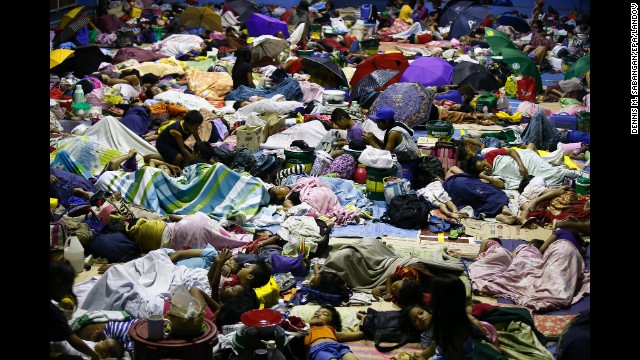
People seek refuge inside a temporary evacuation center in Quezon City, Philippines, on Tuesday, December 9. Typhoon Hagupit tore apart homes and sent waves crashing through coastal communities across the eastern Philippines.
(CNN) — Seeing the first set of images from the typhoon zone in the Philippines is like experiencing a dreadful sense of déjà vu: Flooded roads, fallen huts, small buildings with the rooftops ripped off, and dead animals littering the streets. If this devastation appears eerily familiar, it is because we also saw the same horrific spectacle last year when Typhoon Haiyan struck. Sadly, both the Philippines and the rest of the world are proving slow in learning the most important lessons of these disasters.
Hagupit, which means “smash” or “lash” in Filipino, is a fitting name for the strongest typhoon to hit the Philippines this year (it is actually known as Ruby by locals). When it was first spotted by satellites several days ago, it was immediately likened to Haiyan, the super typhoon that killed more than 6,000 people last year. And while Hagupit didn’t create a more-than-20-foot storm surge like Haiyan did, it has still left a trail of destruction in a region that was still recovering from the latest of what seems like an unending series of calamities.
